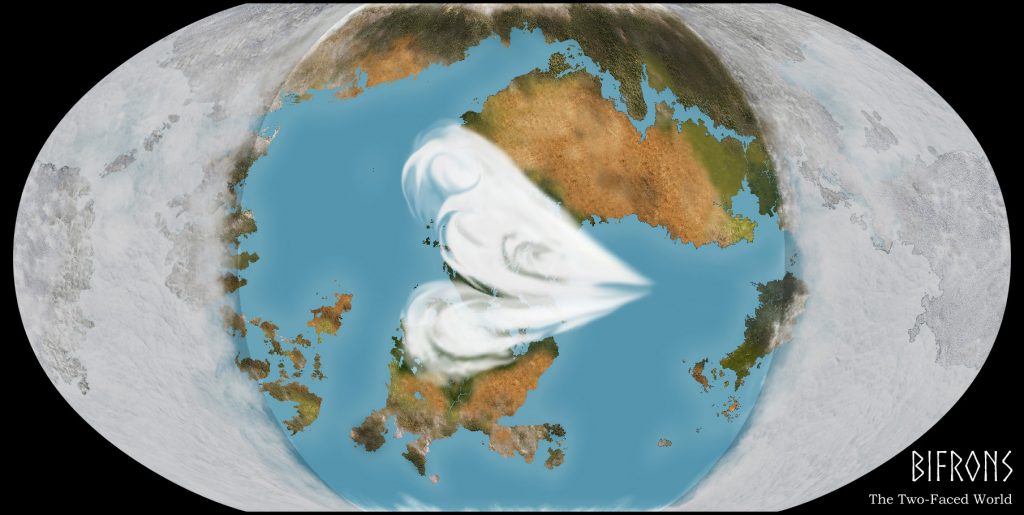The age-old fantasy writer’s dilemma: how much of the world exists – both in your own head and more importantly, in the heads of your characters. If your setting is only medieval-level, it would strain credulity for all but the most exceptional navigator to have an accurate map of the entire globe (or flat sheet, or dome on the turtle’s back, etc.). Some writers only sketch out the immediate surroundings of their characters, then expand as need be. Many only reveal what is within the limits of their setting’s “known world.” (We’re still waiting to hear just how big Essos is, George!)
Personally, I work best as zoomed-out as I can manage. In fact, sometimes I zoom out WAY too much and have to reel myself back in. But with my tidally locked world Bifrons, I had a good excuse. It has has such varied landscape depending on longitude and light levels that you need to see the bigger picture. And the more I worked out the logistics of having late 18th century level tech on such a world, the more I realized the characters needed to know as much of the world as possible. With some small exceptions in the Gloaming, this is NOT a friendly planet. Resources must be carefully rationed and traded, often over huge distances. It stands to reason that the maps the inhabitants have are rather more accurate than anything we were able to have on Earth in 1800.
I debated making “in-universe” maps that show the globe with those nice “Here be Dragons” blank spots like our own explorers had. But having put so much work into making my coastlines, I didn’t want to consign them to the eraser tool. So I hereby decree the inhabitants of Bifrons hate blank spaces as much as I do. So they’ve filled in their globes to near-satellite precision. Whether it’s all accurate or not is another matter. No one will able to hike all the way to the middle of the Nightside and check for many generations.